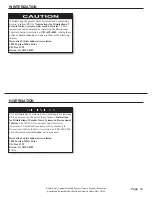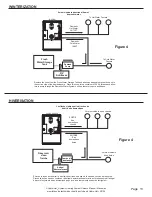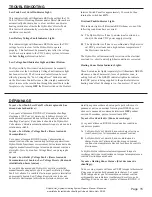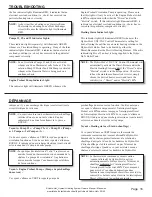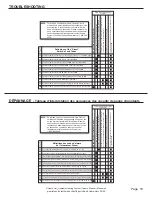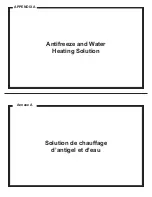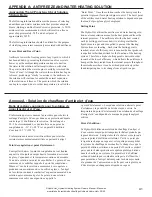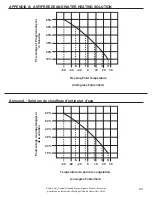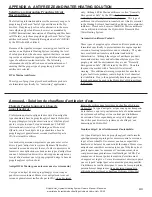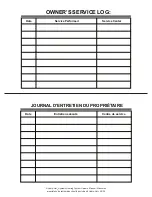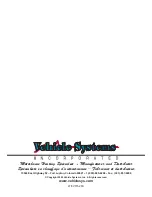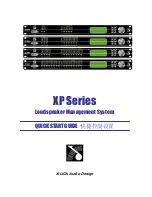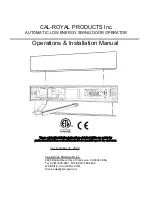
© Hydro-Hot
®
Hydronic Heating System Owner’s Manual / Manuel du
proprié
taire du système de chauffage Hydronic Hydro-Hot
®
09/05
A2
Rust and Anti-Corrosive Inhibitors:
Another major function of antifreeze is to provide protection
to the internal metal components of the Hydro-Hot Hydronic
Heating System from corrosion and rust. Antifreeze is able
to perform this function by the addition of rust- and anti-cor-
rosive inhibitors, which are designed specifically to activate in
a water solution.
Summary:
Antifreeze has three basic functions: freeze protection, boil-
over protection, and anti-corrosion and rust protection.
Antifreeze is also primarily responsible for heat transfer;
however, antifreeze itself does not possess acceptable heat
transfer characteristics. Therefore, as water is an excellent
heat conductor, it is added to the mixture. A 50/50 solution of
propylene glycol antifreeze and water is recommended to
provide the best performance combination of the
aforementioned functions. If excess propylene glycol exists
within an antifreeze and water heating solution, the water’s
heat absorption properties are compromised, which could
ultimately inhibit the Hydro-Hot from providing adequate
domestic hot water and interior heating. Additionally, if the
antifreeze and water heating solution contains over 70 percent
antifreeze, the freezing point is actually raised, resulting in
less freeze protection. Please reference the attached graphical
representation regarding the percentage of antifreeze to water
and how it directly affects the solution’s freezing point.
APPENDIX A: ANTIFREEZE AND WATER HEATING SOLUTION
Inhibiteur de corrosion :
Une autre fonction importante de l’antigel est de fournir
une protection aux composants internes du système de
chauffage Hydronic Hydro-Hot contre la rouille et autres
corrosions. L’antigel peut remplir cette fonction par
l’addition d’inhibiteurs de rouille et autres corrosions qui sont
spécialement conçus pour agir dans une solution d’eau.
En résumé :
L’antigel a trois fonctions fondamentales : protection contre
le gel, protection contre l’ébullition et protection contre la
corrosion. L’antigel est aussi principalement responsable de
transporter la chaleur, mais l’antigel par lui-même ne possède
pas une habilité acceptable de transfert la chaleur. Puisque
l’eau est un excellent conducteur de chaleur, elle est ajoutée
au mélange. Une solution de 50 / 50 de propylèneglycol
et d’eau est recommandée pour une performance optimale
des fonctions mentionnées ci-dessus. S’il y a un excès
d’antigel dans une solution de chauffage d’antigel et d’eau,
les caractéristiques d’absorption de chaleur de l’eau sont
compromises, ce qui pourrait ultimement empêcher le Hydro-
Hot de fournir adéquatement le chauffage de l’eau domestique
et des pièces de l’autocaravane. De plus, si la solution
d’antigel et d’eau contient plus de 70 % d’antigel, le point de
congélation de la solution remonte et fournit une moins bonne
protection contre le gel. Veuillez vous référer au graphique
ci-dessous qui indique le pourcentage d’antigel versus l’eau et
comment il affecte le point de congélation de l’eau.
Annexe A : Solution de chauffage d’antigel et d’eau






